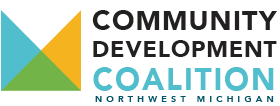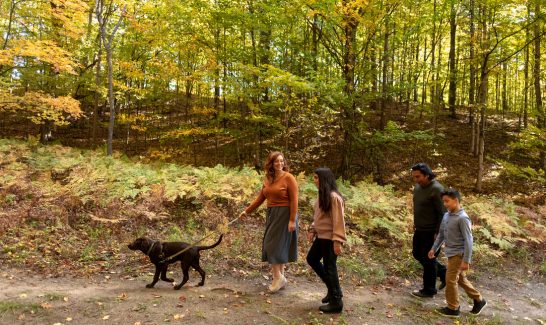-
Economic
Vision:
Diversified, thriving regional economy that promotes sustainable growth and creates jobs.Vision:
Diversified, thriving regional economy that promotes sustainable growth and creates jobs.OBJECTIVE
Increase professional, IT, scientific, technical jobs2030 Target
10% growth in professional, IT, scientific, and technical jobsPROGRESS
2024 Update
3% growthWHY IS THIS IMPORTANT?
By targeting professional, IT, scientific, and technical jobs, we can grow both our economy and support working families in a sustainable way. STEM (science, technology, engineering and math) professionals help diversify our economy and make it more resilient.BASELINE DATA
2.6% decline in professional, IT, scientific, and technical jobs from 2014-2018REGION
Grand Traverse CountyPartners
SOURCE
Traverse Connect Regional Dashboard / US Bureau of Labor Statistics
Date of last update
June 27, 2024OBJECTIVE
Increase average wage per employee2030 Target
90% of Michigan average wagePROGRESS
2024 Update
86% of Michigan average wageWHY IS THIS IMPORTANT?
Strategies will target both the top and bottom wages, mitigating extremes in regional wealth disparity.BASELINE DATA
82% of Michigan average wageREGION
Grand Traverse CountyPartners
SOURCE
Date of last update
June 27, 2024OBJECTIVE
Increase % of working families2030 Target
5% growthPROGRESS
2024 Update
7% growthWHY IS THIS IMPORTANT?
As our region ages and retires, we need a workforce to sustain the economy. Mid-career employees also have children which strengthens our schools.BASELINE DATA
10% decline in working families from 2010-2017REGION
Grand Traverse CountyPartners
SOURCE
Traverse Connect Regional Dashboard / Regional Population Migration Data from the U.S. Census Bureau
Date of last update
June 27, 2024OBJECTIVE
Increase educational attainment of post-secondary credentials of value2030 Target
60% of population has a post-secondary degree or certificationPROGRESS
2024 Update
51% of population has a post-secondary degree or certificationWHY IS THIS IMPORTANT?
Post-secondary degrees and credentials of value increase earning potential for employees. Employers working with credentialing partners build a stronger workforce.BASELINE DATA
34.2% of population has a post-secondary degree or certification (2017)REGION
Grand Traverse CountyPartners
SOURCE
Traverse Connect Regional Dashboard / American Community Survey from the U.S. Census Bureau
Date of last update
June 27, 2024OBJECTIVE
Improve arts and culture resources and experiences2030 Target
350 arts and culture employeesPROGRESS
2024 Update
255 arts and culture employeesWHY IS THIS IMPORTANT?
A vibrant arts culture is a desirable and necessary part of a strong community.BASELINE DATA
317 arts and culture employeesREGION
Antrim, Benzie, Charlevoix, Emmet, Grand Traverse, Kalkaska, Leelanau, Manistee, Missaukee, and Wexford CountiesPartners
Interlochen Center for the Arts
Northwest Michigan Arts and Culture Network
SOURCE
Networks Northwest Data Platform / U.S. Census Bureau CBP Employment
Date of last update
June 27, 2024- Societal
Vision:
Improved health and well-being for all people in Northwest Michigan.Vision:
Improved health and well-being for all people in Northwest Michigan.OBJECTIVE
Improve community mobility2030 Target
Ridership numbers are at least 811,000 (pre-Covid numbers)PROGRESS
2024 Update
366,778 ridersWHY IS THIS IMPORTANT?
Increase use of public transit coupled with investments in more walkable/bikeable communities will promote public safety and health and reduce carbon emissions and other pollutants, traffic congestion, and transportation costs.BASELINE DATA
811,484 total passengersREGION
Antrim, Benzie, Grand Traverse, Kalkaska, and Leelanau CountiesPartners
Bay Area Transportation Authority (BATA)
SOURCE
Date of last update
December 31, 2023OBJECTIVE
Improve access to housing2030 Target
10% reduction in overburdened households or 9,230 new unitsPROGRESS
2024 Update
Between January 2022 through June 2024, 2,888 new units were built.WHY IS THIS IMPORTANT?
Our region is facing a severe shortage of attainable housing options, making it difficult for employers to recruit and retain talent, especially nurses, teachers, counselors, emergency responders, and other essential service providers.REGION
Antrim, Benzie, Charlevoix, Emmet, Grand Traverse, Kalkaska, Leelanau, Manistee, Missaukee, and Wexford CountiesPartners
SOURCE
Date of last update
June 27, 2024OBJECTIVE
Improve youth mental health and well-being through social-emotional learning2030 Target
80% of regional students meet or exceed social-emotional learning benchmarkPROGRESS
2024 Update
76% of middle and high schoolers reported competent or advanced in social-emotional learningWHY IS THIS IMPORTANT?
Social-emotional learning (SEL) is the process of acquiring knowledge and skills to manage emotions, care about others, behave ethically and responsibly, and avoid negative behavior. SELWeb is a national normed reference assessment and SSIS (Social Skill Improvement System) is a criterion reference assessment used to identify needed improvement.BASELINE DATA
72% of middle/high schoolers reported competent or advanced (2022)REGION
Antrim, Benzie, Grand Traverse, Kalkaska, and Leelanau CountiesPartners
Northern Michigan Health Innovation Region (NMCHIR)
SOURCE
Michigan Profile for Healthy Youth (MiPHY)
Date of last update
December 31, 2023OBJECTIVE
Improve youth mental health and well-being through child safety2030 Target
2.23% increase of children ages 0-17 in investigated familiesPROGRESS
2024 Update
1.1% increase from 2022 to 2023 for children 0-17 in investigated families.WHY IS THIS IMPORTANT?
Research indicates a strong relationship between exposure to adversity in childhood--such as sexual abuse, physical abuse, neglect--and multiple risk factors for the leading causes of death in adults. To be effective, child protection must become a part of everyday life. Increased reporting of child safety incidents will lead to more timely and effective prevention and treatment measures.BASELINE DATA
1.32% of children ages 0-17 in investigated familiesREGION
Antrim, Benzie, Grand Traverse, Kalkaska, and Leelanau CountiesPartners
Traverse Bay Children's Advocacy Center
SOURCE
Date of last update
December 31, 2023OBJECTIVE
Increase school readiness2030 Target
TBDPROGRESS
2024 Update
Metrics are currently under review.WHY IS THIS IMPORTANT?
National research shows investment in early literacy, ready to learn, and social networking skills for pre-schoolers increases the likelihood of student success in K-12.REGION
Antrim, Benzie, Grand Traverse, Kalkaska, and Leelanau Countieshttps://nwmicommunitydevelopment.org/wp-admin/post.php?post=268&action=edit#Partners
United Way of Northwest Michigan
SOURCE
Ages & Stages Developmental Questionnaire
Date of last update
June 27, 2024- Environmental
Vision:
Restore and protect Northwest Michigan land, air, and water resources.Vision:
Restore and protect Northwest Michigan land, air, and water resources.OBJECTIVE
Reduce carbon emissions2030 Target
60%
Of energy provided from clean and renewable sourcesPROGRESS
2024 Update
Metrics are currently under review.WHY IS THIS IMPORTANT?
By both reducing energy use and securing energy from renewable sources, we can have a substantial positive impact on our environment.BASELINE DATA
14.87% of energy provided from clean and renewable sourcesREGION
City of Traverse CityPartners
SOURCE
Traverse City Light & Power Climate Action Plan
Date of last update
June 27, 2024OBJECTIVE
Protect and preserve open space and farmland2030 Target
13,000
New acres protectedPROGRESS
2024 Update
The Coalition is working with MSU Extension and the Grand Traverse Foodshed Alliance on improved metrics to track the protection and preservation of farmlands.WHY IS THIS IMPORTANT?
Loss of farmland and greenspace damages wetlands and watersheds and negatively impacts our ability to achieve a sustainable food ecosystem.BASELINE DATA
433 acres protected and preserved annuallyREGION
Antrim, Benzie, Grand Traverse, Kalkaska, and Leelanau CountiesPartners
Grand Traverse Foodshed Alliance
Grand Traverse Regional Land Conservancy
SOURCE
Date of last update
June 27, 2024OBJECTIVE
Improve the ecological health of the Boardman/Ottaway River Watershed2030 Target
TBDPROGRESS
2024 Update
Metrics are currently under review.WHY IS THIS IMPORTANT?
The Boardman/Ottaway River Watershed covers 287 square miles in Grand Traverse and Kalkaska Counties and includes 180 miles of river and tributary streams. It plays a critical role in the ecological health of Grand Traverse Bay, and provides habitat for trout and many other native species.REGION
Grand Traverse and Kalkaska CountiesPartners
The Watershed Center Grand Traverse Bay
SOURCE
The Boardman River Watershed Prosperity Plan
Date of last update
June 27, 2024 - Societal
Regional Community Scorecard
Our Regional Community Scorecard features measurable economic, societal, and environmental goals for our Northwest Lower Michigan region, with specific targets for improvement by 2030. The Scorecard measures and monitors change in the areas that matter most, emphasizing shared accountability and transparent communication along the way.
Please note that some Scorecard objectives cover one, five, or 10 counties, depending on our partners’ service areas.
How to Use the Scorecard
The Scorecard is organized into three broad categories: Economic, Societal, and Environmental. Each category contains a defined vision, including several objectives, long-term targets, and key indicators of progress. Each Scorecard objective was identified with input from Coalition members with subject matter expertise.
Scorecard Terminology
-
- Vision – A succinct description of where we want to see our region in 10 years.
- Objective – How we will measure progress toward our vision.
- Target – The specific and measurable long term goal.
- Key Indicator – A shorter-term target to measure progress toward our target and vision.
Scorecard Navigation
-
- Select a category (Economic, Societal, or Environmental) using the + or – to expand and collapse each category.
- Explore each vision, objective, target, and key indicator.
- Hover over the information “i” under each objective to view additional details, such as baseline data, data sources, which partners are working on each objective, why each objective is important, and more.
Tracking Progress
The Scorecard is updated on an annual basis. To see progress toward our shared goals, please reference the color coded bar above each objective.
-
- Green – Reflects positive trend toward goals
- Yellow – Reflects no change from the baseline data
- Red – Reflects a negative trend away from goals



